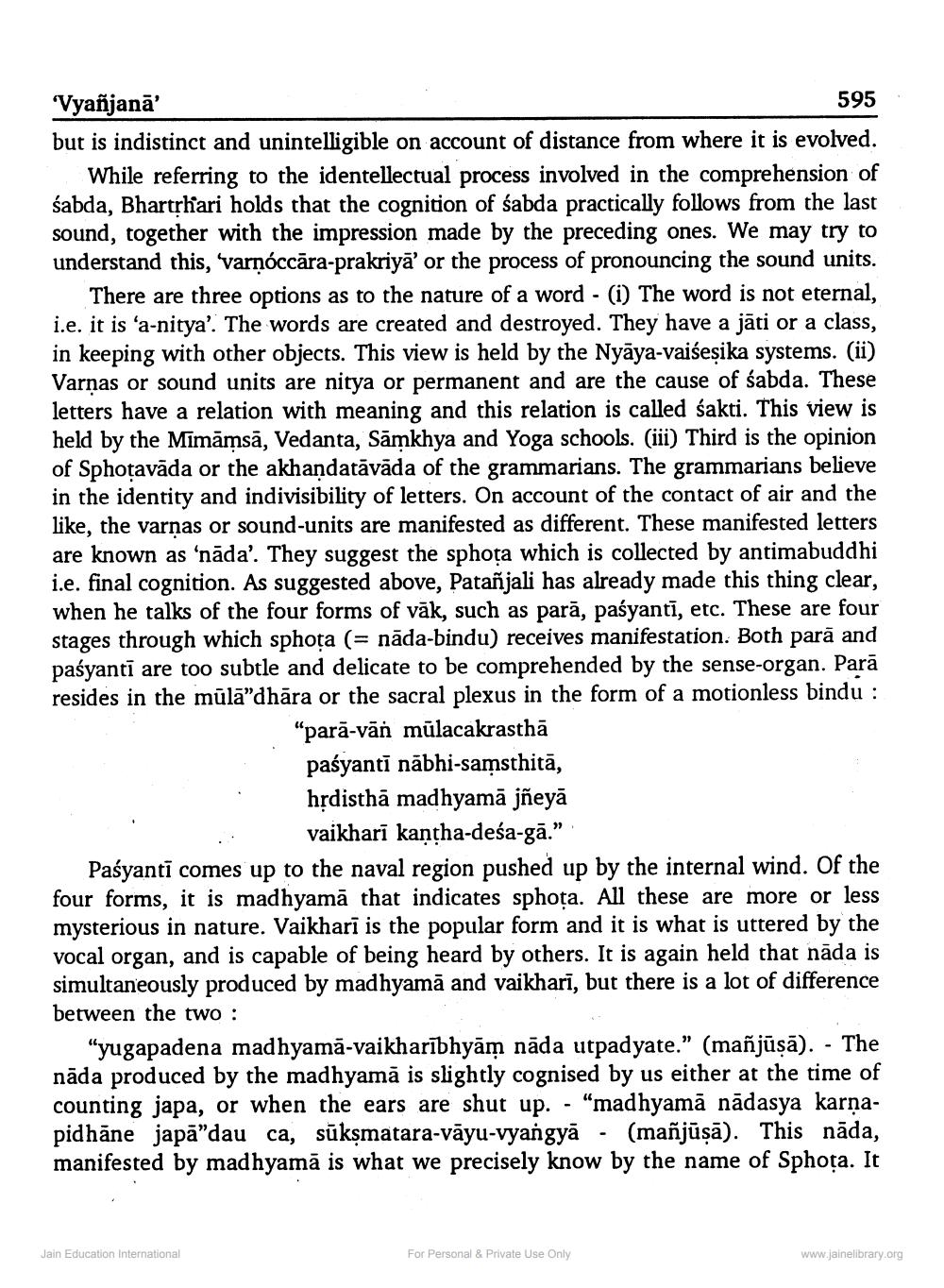________________
'Vyañjanā'
595 but is indistinct and unintelligible on account of distance from where it is evolved.
While referring to the identellectual process involved in the comprehension of śabda, Bhartshari holds that the cognition of sabda practically follows from the last sound, together with the impression made by the preceding ones. We may try to understand this, 'varnóccāra-prakriyā' or the process of pronouncing the sound units.
There are three options as to the nature of a word - (i) The word is not eternal, i.e. it is 'a-nitya'. The words are created and destroyed. They have a jāti or a class, in keeping with other objects. This view is held by the Nyāya-vaiśesika systems. (ii) Varnas or sound units are nitya or permanent and are the cause of sabda. These letters have a relation with meaning and this relation is called sakti. This view is held by the Mimāmsā, Vedanta, Sāmkhya and Yoga schools. (iii) Third is the opinion of Sphotavāda or the akhandatāvāda of the grammarians. The grammarians believe in the identity and indivisibility of letters. On account of the contact of air and the like, the varnas or sound-units are manifested as different. These manifested letters are known as 'nāda'. They suggest the sphoța which is collected by antimabuddhi i.e. final cognition. As suggested above, Patanjali has already made this thing clear, when he talks of the four forms of vāk, such as parā, paśyanti, etc. These are four stages through which sphota (= nāda-bindu) receives manifestation. Both parā and paśyantī are too subtle and delicate to be comprehended by the sense-organ. Parā resides in the mūlā"dhāra or the sacral plexus in the form of a motionless bindu :
"parā-vān mūlacakrasthā paśyanti nābhi-samsthitā, hțdisthā madhyamā jñeyā
vaikhari kantha-deśa-gā.” Paśyanti comes up to the naval region pushed up by the internal wind. Of the four forms, it is madhyamā that indicates sphoța. All these are more or less mysterious in nature. Vaikhari is the popular form and it is what is uttered by the vocal organ, and is capable of being heard by others. It is again held that nāda is simultaneously produced by madhyama and vaikharī, but there is a lot of difference between the two :
"yugapadena madhyamā-vaikharībhyām nāda utpadyate.” (mañjūṣā). - The nāda produced by the madhyamā is slightly cognised by us either at the time of counting japa, or when the ears are shut up. - “madhyamā nādasya karņapidhāne japā”dau ca, sūksmatara-vāyu-vyangyā - (mañjūsā). This nāda, manifested by madhyamā is what we precisely know by the name of Sphoța. It
Jain Education International
For Personal & Private Use Only
www.jainelibrary.org




